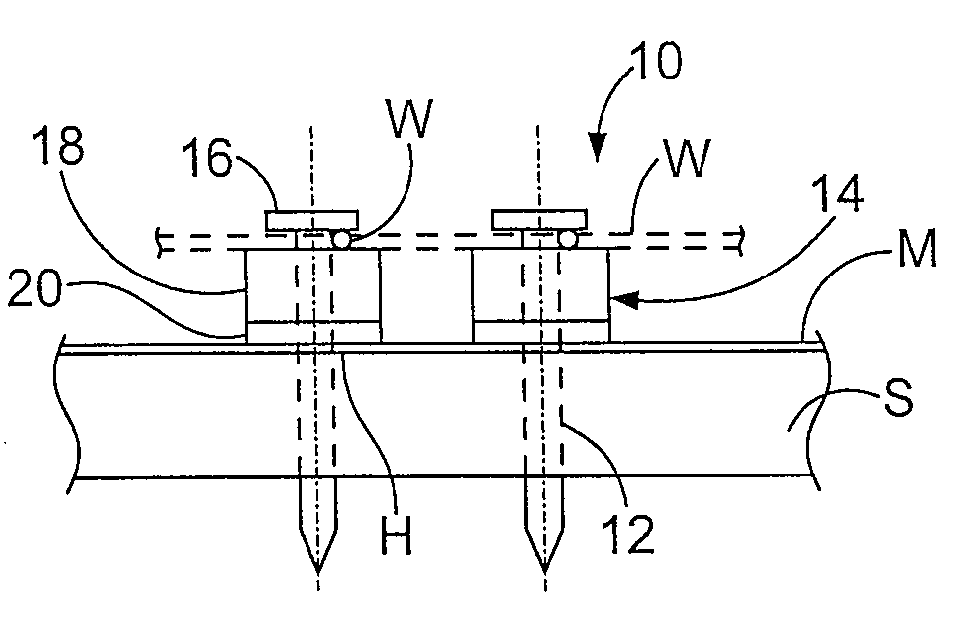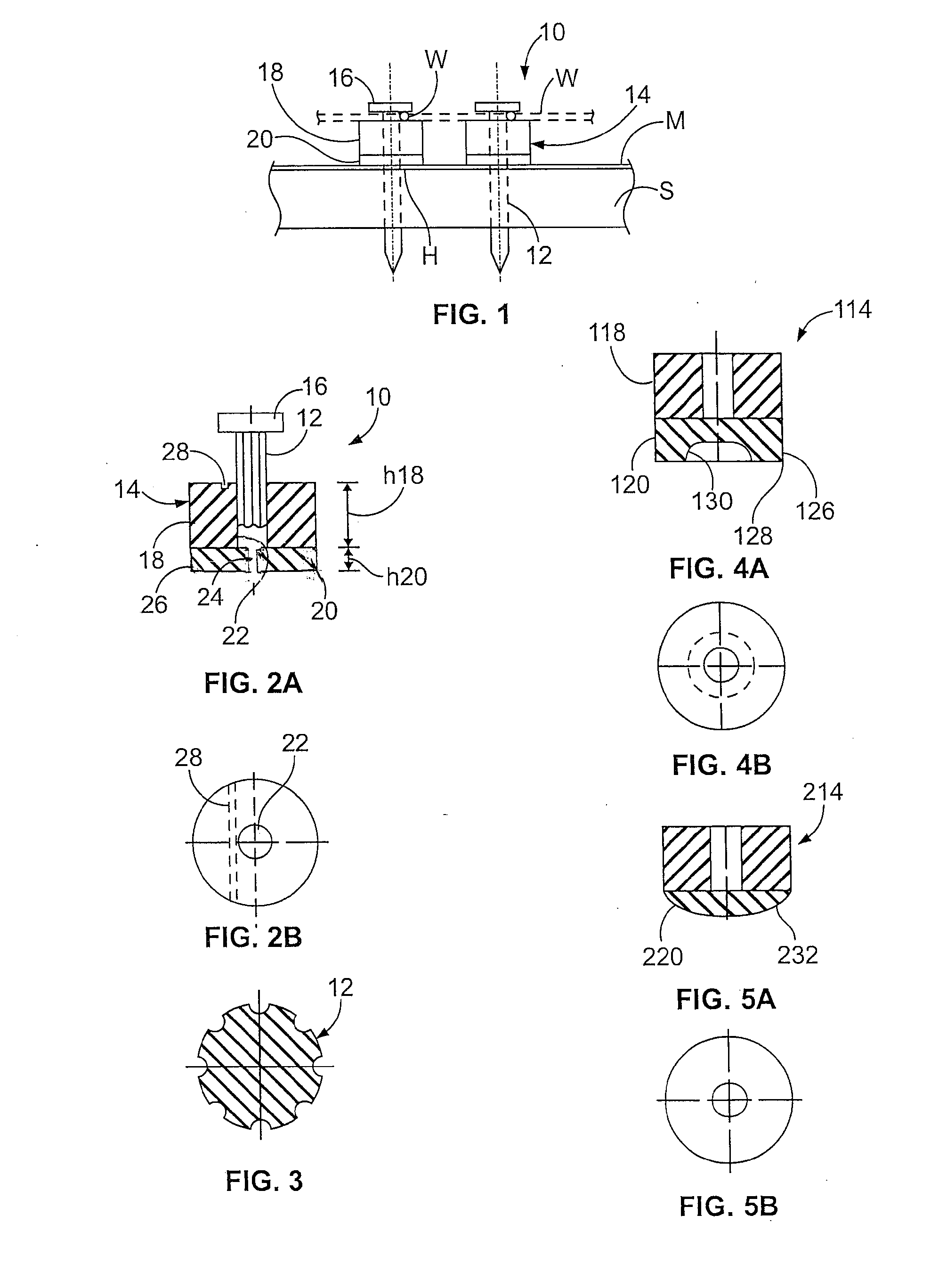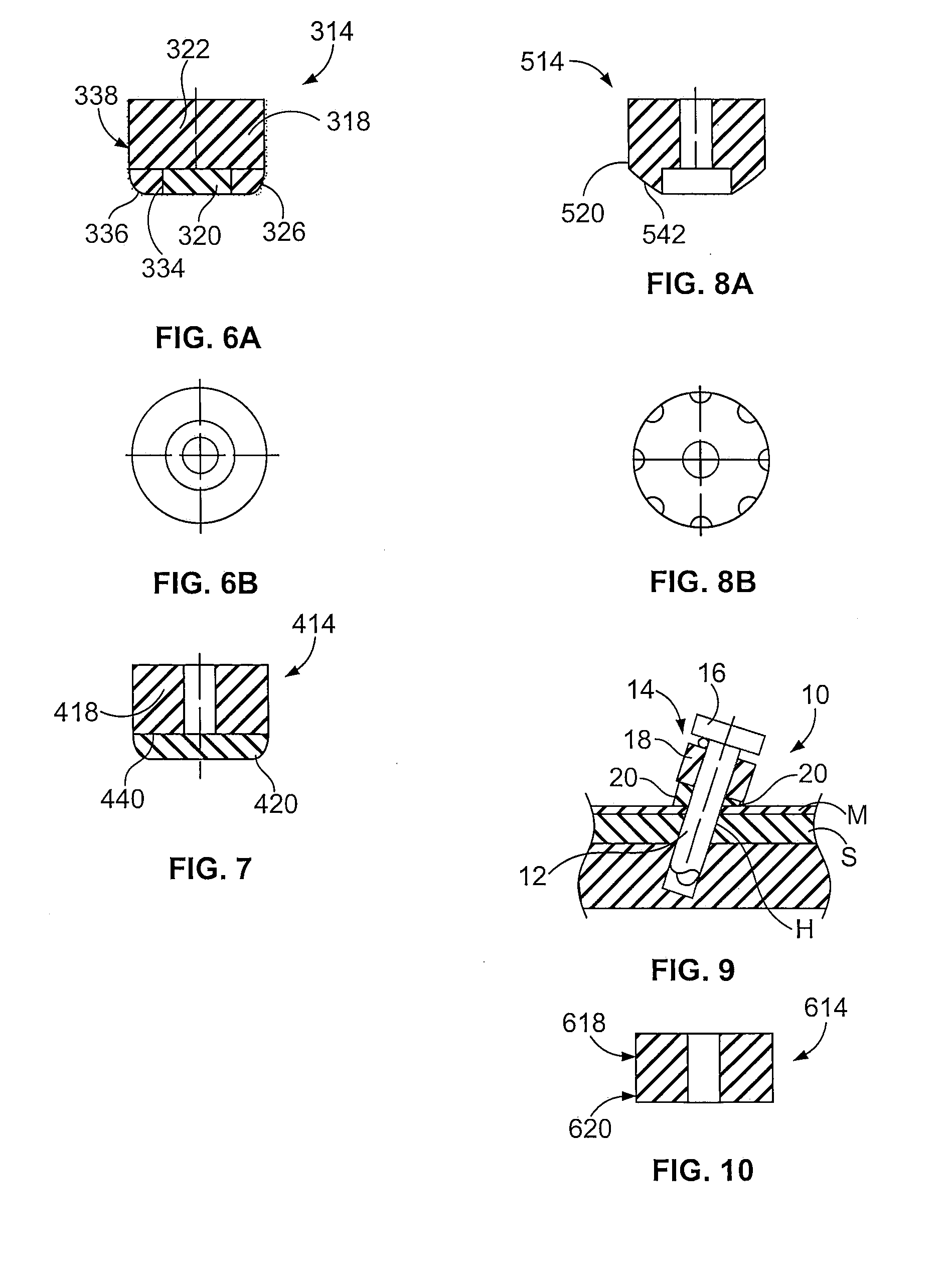Stucco fastener
a technology of fasteners and succos, which is applied in the direction of washing machines, ways, applications, etc., can solve the problems of mold and mildew growth, nail holes in the liquid impermeable membrane, and damp regions of the structur
- Summary
- Abstract
- Description
- Claims
- Application Information
AI Technical Summary
Benefits of technology
Problems solved by technology
Method used
Image
Examples
embodiment 214
[0046]Still another alternate embodiment 214 is illustrated in FIGS. 5A and 5B. This embodiment is similar to that of FIGS. 2A and 2B, except that the bottom surface 232 of the sealing element 220 (the surface 232 that contacts the membrane M) is formed having an overall curved surface. The sealing element 220 has a thickness (height) of about 0.125 inches and a radius of curvature of about 0.375 inches. The overall curved surface 232 maintains good sealing even if the nail is not driven straight (normal to the surface, see, for example, FIG. 9).
embodiment 314
[0047]Still another alternate embodiment 314 is illustrated in FIGS. 6A and 6B. In this embodiment, the spacer portion 318 is formed having a well 334 in the bottom surface 336 in addition to the through bore 322 (for the nail). The well 334 is about 0.343 inches in diameter and about 0.062 inches deep. The bottom outer corners 326 can be formed having a curved edge, with a radius of curvature of about 0.032 inches.
[0048]The sealing element 320 is fitted into the well. The sealing element 320 has a thickness (height) of about 0.156 inches and a diameter of 0.343 inches (to match the diameter of the well). The spacer portion 318 can be formed having a roughened outer surface (as at 338).
embodiment 114
[0049]Yet another alternate embodiment of the sealing / spacer assembly 414 is illustrated in FIG. 7. This embodiment 414 is similar in size and configuration to that of the embodiment 114 in FIGS. 2A and B. The sealing element 420 can be formed from the above-noted EPDM-PP (e.g., SANTOPRENE®), or like material, but the spacer element 418 is formed from a different material. In such an alternate embodiment 414, the spacer element 418 is formed from a fibrous material such as paperboard or a paperboard based material (cardboard, recycled paper and paperboard products and the like), forming a base material. The base material 418, as shown, can be compressed to increase the density and structural strength (e.g., reduce the compressibility) of the material. Compression (or densification) also increases the ability of the material 418 to repel water or other liquids. If desired, the sealing element 420 may be adhered to the spacer element by 418, for example, an adhesive 440.
[0050]Optional...
PUM
 Login to View More
Login to View More Abstract
Description
Claims
Application Information
 Login to View More
Login to View More - R&D
- Intellectual Property
- Life Sciences
- Materials
- Tech Scout
- Unparalleled Data Quality
- Higher Quality Content
- 60% Fewer Hallucinations
Browse by: Latest US Patents, China's latest patents, Technical Efficacy Thesaurus, Application Domain, Technology Topic, Popular Technical Reports.
© 2025 PatSnap. All rights reserved.Legal|Privacy policy|Modern Slavery Act Transparency Statement|Sitemap|About US| Contact US: help@patsnap.com



